General Insurance Blogs, Articles & Updates by - Magma HDI
Have us call you
- RENEW YOUR POLICY
- BUY NEW POLICY

Six practical gifts for any parent they would love
Parenting is tough, but buying an ideal gift for your parents might be even more challenging. What would you gift the people who gave you everything? Is there even a perfect gift for parents? The finest presents are ones that celebrate their hard work and provide them with a much-needed break from daily life. These gift choices are guaranteed to be a success.
Even a tiny present may be a polite way to express your love and gratitude towards them. Owing to internet purchasing, your options are almost limitless. However, this may lead to some significant stress while decision-making.
We are here for your help as we have curated a list of the most fantastic presents for parents.
1. Packing cube set of 6:
This is a packaging set that contains six pieces. Cubes of four different sized bags, one for footwear, and one zippered bag to separate dirty clothes. This could be the perfect gift for people who like to travel and explore around. It is incredibly organised and easy to carry along.
2. The latest Fitbit:
A fitness watch is an intelligent fitness tracking device that also serves as a watch. It keeps track of your daily routine, steps, burned calories, hourly activity, heart rate, and more. This gift could inspire your parents to start working out and look after their health.
3. A vacation:
One of the best gifts for anyone is a little vacation to cherish priceless moments. A trip that takes away all their stress and worries. Some alone time with nature is what a parent needs after looking after everybody in the family. So, go ahead and book a lovely trip to a beautiful destination.
4. Neck and Back massager:
Growing up, you may have been a pain in the neck (literally!). This is your chance to make up for it by giving your parents an electric neck and back massager. Despite the age, one could always have the benefits of massages whenever they want.
5. Gardening kit for organic kitchen herbs:
A one-of-a-kind gift for people who love to cook with fresh home-grown ingredients. Gardening takes up a lot of your time, but the outcome is worth every second you invest. This is also an excellent hobby for retired parents.
6. Health insurance:
Health insurance is the most valuable gift you can give your parents. They never prioritise themselves, so you have to do it for them. All you have to do is look for the best health insurance in India for parents and purchase it to secure their health and ensure their happiness.
There's no doubt that the most important people in your life deserve nothing but the finest, no matter what the occasion. Nonetheless, when it's time to find the right present for them, it may be tough to think of something as unique as them.
That's where our list comes in. Picking gifts for parents will always leave us perplexed for a while. However, something practical and functional is an excellent choice. We hope this list guides you in choosing the perfect gift for your parents.
Click HERE To get the best health insurance in India for parents, click
Disclaimer: The information provided above is for illustrative purposes only. To get more details, please refer to policy wordings and prospectus before purchasing a policy.
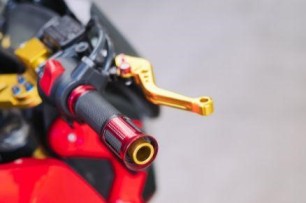
Learn how to slow down your bike after an unexpected brake failure
We can rave about the look and mileage of our bike's engine, but, at the end of the day, it all comes down to how efficient it is on the road. Driving in a country like India, where the roads and the path walks have no clear distinction, we might encounter various instances where we have to dodge a huge pothole or the kids playing on the street. So, having an efficient brake system is vital to ensure the safety of yourself and others.
The properties, characteristics, and behaviour of brakes do not always remain the same. These can be influenced by temperature, operating habits, operating durations, and effects of interconnected parts, sometimes leading to brake failure.
In situations where you come across a brake failure, being prompt on your toes will help you avoid any accidents.
1. Maintain your calm:
It's common knowledge that maintaining your composure under pressure helps you navigate any problem. The same is applicable for the time that you are on the road. If possible, taking your bike to a less busy road should be the first step to avoid crashing into people or vehicles.
2. Do not turn off the engine:
Your first instinct could be to turn off the engine and let the bike stop, but this can be extremely dangerous. You need to control the situation to avoid traffic crashing into you. So having a constant acceleration in this situation can prevent a crash.
3. Stick to the road and not the sides:
Without the brakes, your bike will be difficult to manoeuvre. Sticking to the sides might present you with uneven roads. Instead, wait for the bike to slow down before pulling over to the side of the road. Only under hefty traffic conditions should you consider going to the side of the road while your bike is still retaining speed.
4. Use your gears:
Surprisingly, gears can assist you in slowing down your bike in a situation where brakes aren't responding. You need to be alert and immediately start lowering your bike's gears. This will create a mechanical resistance from the engine opposing the motion, causing the bike to slow down. Using this method can help you control the bike and prevent the situation from escalating. Once your bike slows down, you can pull it over to a safe place and then shut the engine.
5. Use your horn:
Many times, we come across people relentlessly honking their horns in traffic jams. While that might sound annoying in most cases, do not shy away from alerting people on the road. Since they are not aware of your situation, it is best to attract attention and to be careful.
These are some things that you can focus on if your brakes fail. Road safety is paramount whether you are driving or a pedestrian. Be alert while handling the bars, focus on the road, and resist overspeeding.
Regular check-ups and servicing ensure both you and your bike are covered. Having bike insurance can add value to your experiences. So, consider getting bike insurance online to protect you against damages, third-party legal liability cover, and 24/7 assistance for emergencies.
Click HERE to buy bike insurance online.
Disclaimer: The information provided above is for illustrative purposes only. To get more details, please refer to policy wordings and prospectus before purchasing a policy.
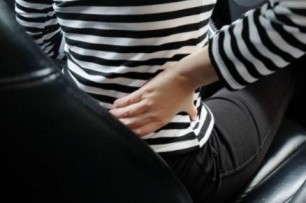
Six best ways to avoid backaches during car journeys
Planning impromptu road trips is always a great way to take some time off and have fun. These days, people like to travel with ease and comfort, so road journeys have become the ideal mode of travel during vacations. However, continuous driving can become uncomfortable and cause various back troubles like backaches, stiffness, numbness, discomfort, nausea, etc.
In this blog, we will discuss the six best ways to avoid backaches during car journeys so you can enjoy your trip to the full extent.
1. Comfort:
Make sure that you are comfortable from the beginning of your trip. Do not keep purses, watches, etc., in your back pocket as it might disturb the alignment of your spine, resulting in discomfort or backache. If you are driving, sit closer to the steering wheel instead of bending or messing up your posture to reach it.
2. Alignment:
Keeping your back aligned to the seat provides comfort while driving. You can add comfortable gear and equipment to help you maintain your back alignment. Roll up a towel and keep it between your back and the seat to maintain the curve of your posture.
3. Smooth rides:
Replace any worn tyres or parts that can cause jerks on the road. Make sure that your ride is as smooth and comfortable as possible. You can use a car seat cushion to help with your sciatica pain.
4. Breaks:
Road journeys require you to sit in the same positions for a longer duration of time which can cause numbness in your legs and back. To avoid the risk of backaches, make sure that you take breaks in the regular intervals of your trip and get out of your car to stretch your whole body. Move around a bit to ensure there is no stiffness.
5. Cold pack:
If you have pre-existing backache issues, it would be good to bring a cold pack for the journey. Backaches can trigger inflammation. Applying cold packs helps reduce inflammation and calm sore and numb tissues. To sustain the temperature of your cold pack, you can carry a cooler in your car and keep reusable ice packs in it.
6. Warmers:
Some people have found that seat warmers help relax the muscles by warming up the lower back. You can use reusable heating pads in place of a pillow that provides lumbar support, heat wraps that last for longer durations, etc., for a comfortable road trip experience without the risk of severe backache.
To avoid backaches, you must take good care of your posture during road journeys. Excessive strain on your body, especially the back, due to continuous driving for hours can affect your physical wellbeing. Follow the above tips to make driving comfortable and less exhausting.
Consider buying car insurance to avoid hefty expenses in case of any mishaps. Reliable car insurance with an additional feature of Personal injury protection (PIP) will cover all the expenses, including garage costs, medical bills and provides financial security under all circumstances.
Click HERE to know more about car insurance.
Disclaimer: The information provided above is for illustrative purposes only. To get more details, please refer to policy wordings and prospectus before purchasing a policy.
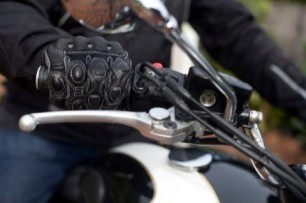
Learn how to control your bike on slippery roads or slopes
While riding a bike, it is necessary to know when to apply the rear or the front brakes. Randomly using both or either of them could lead to an accident.
Factors like maintaining your balance while driving or taking turns hold significant importance. Many people know how to ride a bike, but not everyone may be sure about controlling the bike in severe circumstances on the road. All you need is a little practice with a set of instructions to follow, and you're safe to go.
For now, we'll focus on how you can control your bike on slippery roads. This is because not everyone knows how to manage their balance, maintain a stable speed, and apply brakes on wet or slippery roads.
1. Brake force:
While you're driving on any conditional road, it is necessary to know all the braking techniques beforehand. For example, if you're driving at 20-30 miles per hour, you can use the rear brake and apply the same. But, it would help if you pressed it gently without much pressure. Applying too much pressure may cause you to end up slipping on the road.
Slippery roads are unsafe for driving. No matter what speed you're driving at, you can apply both brakes at the same time but with the same amount of pressure. However, pressing either one with higher intensity than the other could be risky.
2. Tyre gripping:
This is not well-known among most bike riders, but it is as important as knowing the braking system. A tyre should have a good number of treads to provide you control over slippery roads. So always make sure to check the grip of the tyres.
If the tyre does not have enough grip and treads, there won't be a layer of protection from the water on the road. A smooth surface can make your tyre straight flat and drastically increase the chances of slipping. Do not forget to check for any punctures or cuts on the tyre before heading for your trip.
3. Speed limit:
Many accidents occur because of the driver's negligence towards the speed limits. Managing the overall balance and speed in a car is different from bikes. If you want to stop or slow down, apply either or both brakes with equal pressure. Never slow down instantly. Leave the throttle and apply the brakes only after that.
4. Chain of the bike:
When you're driving on a wet or slippery road, the life of the chain could easily get affected by junk or jamming. In addition, if the chain is not oiled regularly, it could get loose and come off the socket. Hence, ensure to oil the chain regularly.
Driving on slippery or uneven roads can be tricky, so having bike insurance to protect you in any situation is essential. In addition, bike insurance will guarantee financial assistance in case of any damage to your vehicle and help you rest assured. With the tips mentioned above, enjoy your ride in the rain! Drive safe!
Click HERE to buy ideal bike insurance.
Disclaimer: The information provided above is for illustrative purposes only. To get more details, please refer to policy wordings and prospectus before purchasing a policy.
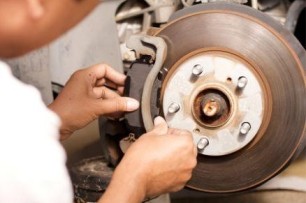
Here are a few ways to identify worn-out brake pads and fix them
If you own a car, you have to check on different parts that might require maintenance and replacement from time to time. You cannot be careless; otherwise, it might risk your and your family's safety and cause damage to your vehicle. In addition, it might restrict your dependency on it until the issues get fixed. Therefore, you need to stay ahead of these problems and watch for future repair and upkeep indications.
This article will discuss a few ways to identify worn-out brake pads and how to fix them. Now, worn-out brake pads are a thing you can miss out on while driving your car. But, first, you need to understand why you need to change your brake pads and how often you should change them.
Brake pads are made from various materials, ranging from metallic to composite to ceramic. However, irrespective of the material they're made of, you are supposed to replace them occasionally. Therefore, making sure that your car stays operational is very important, and changing worn-out brake pads is a part of accomplishing that. In addition, replacing your brake pads helps you in minimising your vehicle maintenance costs.
Now let's discuss WHY you need to change your car's brake pads:
1. Brake pads don't last the lifetime of your car and need to be changed at regular intervals.
2. They lose their efficiency every time you drive your car. So, the more you drive your vehicle, the more worn out the brake pads will be.
3. If you use your vehicle occasionally, the brake pads will still need replacement later than those who use their car frequently.
4. The car's ability to stop effectively reduces with worn-out brake pads. As a result, the overall effectiveness of the braking system also decreases.
5. The diminishing ability of your car to stop due to worn-out brake pads might lead to severe accidents, endanger the lives of the passengers, and cause severe damage to the vehicle.
HOW to identify if it's time to replace your car's brake pads:
1. It is helpful to have a brake pad sensor and "alert" light in your car. The light turns on, giving a notification that your brake pads need replacement.
2. Screeching or squealing noises while driving or applying the brakes indicate worn-out brakes.
3. Replace the brake pads if you notice that the car brakes are shaking. You will also realise that more effort is required to stop the car, and the braking is no longer smooth.
4. There is a grinding noise upon hitting the pedal.
5. During an oil change, when your car mechanic informs you about wearing and tearing of brake pads.
6. If they have reached their limit of service. Brake pads come with a stipulated period to work to their best performance. Eventually, they deteriorate in quality due to constant friction and wear and tear.
Now that we have discussed a few ways to identify worn-out brake pads, it would be wise to invest in car insurance to claim proper maintenance and various expenditures in unprecedented circumstances. You can explore all available insurance options and buy online car insurance that suits you best for your car.
Click HERE to know more about online car insurance.
Disclaimer: The information provided above is for illustrative purposes only. To get more details, please refer to policy wordings and prospectus before purchasing a policy.

Plan your perfect workcation at these top five serene destinations of India
Two years ago, the pandemic took over our lives like a storm. People were locked inside their homes for months on end. And as soon as the restrictions were lifted, we saw an increased number of people looking for ways to unwind. Having been cooped up inside their rooms for a long time, people started looking for alternate work locations. This became a growing trend amongst the working group. Studies suggested that taking workcations positively reflected the employees' morale and increased productivity.
The term workcation is a combination of two concepts; work and vacation. We saw people flooding their social media with pictures of them working from beautiful mountains or beaches in the background. If you have been wondering where to go for your next workcation, this article is just for you. We have brought a list of a few places you can go to enjoy your work.
1. Pondicherry:
If you are looking for an ideal beach location, Pondicherry is the place for you. It hosts various big and small cafes with a soothing ambience. Make use of the free Wi-Fi in the cafes for your work as you indulge in the delicious treats offered. Spend time in various eateries in the mornings and unwind by the beach for spectacular sunsets in the evenings.
2. Kasauli:
Any Ruskin Bond fan will know why Kasauli is on this list. This beautiful hill station in Himachal Pradesh boasts picturesque views of snow-clad mountains and lush forests. Kasauli, to date, holds memories of British history in its architecture. The churches offer a peaceful environment, much like the rest of the city, where you can sit with a warm cup of coffee and work your way through a stress-free day.
3. Munnar:
For a tea lover, there's no better way to work than with the aroma of tea in the air. Munnar hosts a variety of tea museums and stalls where you can enjoy the different kinds of tea that the town has to offer. The misty hills, the fast-flowing streams and tiny little cottages are equivalent to paintings. Enjoy your tea with some traditional Kerala banana fritters as you clock off for the day.
4. Udaipur:
The Venice of the east has an array of lakes with the beautiful Aravali hills skirting it. Work in the midst of royalty as you explore the various breathtaking palaces that Udaipur hosts. Characterised by a rich history, Udaipur is a must on your list if you are a history enthusiast. It has something for everyone, varying from grand palaces to tiny cafes, monotony is out of the question for any traveller.
5. Goa:
This is a no brainer for anyone wanting to take a vacation. If you are a party animal, there are many options in North Goa. Work in the mornings while enjoying the sounds of the beach and join the crowd for the party in the evening. However, if you prefer peace and calm, South Goa is the place for you.
These are a few places you can choose from for your next workcation. Keep in mind that the pandemic is not entirely over. So wear masks and carry sanitisers at all times. With such unpredictable times, it is a wise choice to buy insurance policy online. Invest in an insurance policy to ensure your travel plans are intact, and in case of an unforeseen expense, you stay is covered.
Click HERE to buy insurance policy online.
Disclaimer: The information provided above is for illustrative purposes only. To get more details, please refer to policy wordings and prospectus before purchasing a policy.
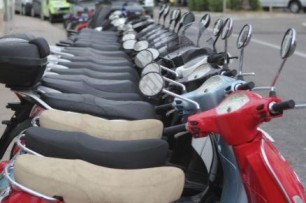
Five best tips for picking the right two-wheeler to satisfy your needs
Imagine you are already running late for an important meeting and get stuck in traffic. It sounds dreadful. With increasing traffic situations, two-wheelers are the most convenient way to reach your destination. In addition, they are easier to maintain and much more affordable.
Two-wheelers are your asset, and investing in one means choosing the best for your needs without ripping your pockets. So, here's a checklist that will make the decision easier when you buy a two-wheeler.
1. Understand the purpose of your two-wheeler:
Understanding the purpose of your two-wheeler is very important. How much will you use it? What will your daily travel be like? Are you going to use it for office work, personal travel, long rides, etc.?
Based on your purpose, you can select the right two-wheeler. For example, if you are taking it for family use, you might consider taking a vehicle that's convenient for every member of the house. Similarly, if you are going to use it for office or personal use, a bike can come in handy.
2. Mileage:
This is no surprise that petrol prices are becoming sky-high. Every two-wheeler comes with extra mileage, and you don't want to invest in one that shakes up your finances with the increasing expense of petrol every month.
Depending on how much you can spend on fuel every month, look for a vehicle that gives good mileage. When you search online, you can get details about the vehicle's mileage and decide accordingly. For example, a sports bike will have less mileage than a scooter.
3. What is your budget:
Budget is one of the top factors to consider when buying a two-wheeler. First, understand your monthly income, consider your expenses, then look at how much you're willing to spend on the two-wheeler.
If you are looking forward to paying for your two-wheeler in monthly installments, consider determining the EMIs you will have to pay. If they are too much, you need to develop an effective saving plan.
4. Service and maintenance:
No two-wheeler works properly without good maintenance. However, when you visit the store, ask about the after-service that you will get. Mainly, most companies offer first three services. Understand how much you have to spend monthly on the vehicle's maintenance. It will always help if you go with popular two-wheeler brands whose spare parts are affordable and readily available.
5. Features:
Every person has different expectations from their two-wheeler. Some may look for a good design, while others lean more towards comfort. Additionally, if you have back issues, you may want to consider that driving the two-wheeler does not hurt your back. List all the features you are expecting and consider the above points before selecting the best two-wheeler for you.
The tips mentioned above will help you determine if the two-wheeler is perfect for you or not. After deciding, ensure that you buy bike insurance online to protect your vehicle if things take a wrong turn and put a less financial strain on you. Your dream two-wheeler is just a few steps away. Go ahead and confidently pick the one that suits your needs!
Click HERE to buy bike insurance online.
Disclaimer: The information provided above is for illustrative purposes only. To get more details, please refer to policy wordings and prospectus before purchasing a policy.

Plan a perfect summer vacation to these top island tourist places of India
From ice-capped mountains in the north to beautiful peninsulas in the south, India promises several travel experiences for everyone. What astonishes the travellers is the diverse local culture, cuisine, and lifestyle that you can enjoy in every part of India. The country comprises various big and small islands with rich cultural backing, and today we will look into a few of these to help you plan your next summer vacation. We bring the top 05 best islands to visit in India, which you can add to your travel bucket list.
1. Diu island:
Possibly one of the most beautiful islands on the list, Diu Island consists of beaches and heritage that are sure to enchant anyone who visits here. From forts to caves to museums, Diu offers so much to explore.
The Diu fort reveals some of the forgotten Portuguese histories with eye-catching stonework structures. After exploring the city throughout the day, a visit to Chakratirth beach is a must. With a stunning sunset and a backdrop of local food stalls, this is the perfect place for you to unwind.
2. Havelock islands:
One of the most talked-about islands, Havelock hosts tourists throughout the year. The largest island in Andaman, it's famous for its blue water, picturesque views, and adventurous water sports. It is an easy competition to foreign beaches and will give you a lifetime of memories.
3. Lakshadweep islands:
The smallest group of islands with a population of as few as 60,000 residents, Lakshadweep is where you would want to go to stay away from the tourist crowd. Spending time on the island will help you closely see the local life in an island town. Since the beautiful beaches are the island's main attraction, this is your go-to destination if all you want is to hear the waves crashing and seagulls hooting.
4. Munroe islands:
Munroe island in Kerala is a cluster of eight islands that promises an impeccable view of narrow canals connecting a network of backwaters. Munroe islands was once an unexplored territory, and only now has it started opening to tourist exploration. Munroe has beautiful rustic architectural relics that have stood the test of time. It still holds the old culture and lifestyle of the place intact. You can enjoy a wide variety of home-cooked meals while enjoying homestay and interacting closely with the locals.
5. St. Mary's islands:
A collection of 4 small islands, this place is famous for its unique rock formation similar to Ireland's. A serene island, close to the coast of Udupi, it has significance in science as well. It is believed that these unique rock formations were caused due to subvolcanic activities in Africa.
These are a few of India's many beautiful island tourist destinations, which magnetically attract people from all over India. Remember that these places are set away from the mainland; hence ensure to look into safe and comfortable travel options. Carry first aid, emergency medicines, and snacks for the commute. Insure your travel plans with general insurance for greater financial safety. You can buy general insurance online and safeguard yourself against any unprecedented expense you might incur during your trip.
Click HERE to know more about how to buy general insurance online.
Disclaimer: The information provided above is for illustrative purposes only. To get more details, please refer to policy wordings and prospectus before purchasing a policy.


